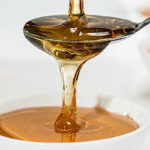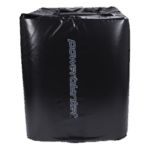It is a widespread belief that native Americans showed the pilgrims how to plant corn with bits of fish as fertilizer. Historians may debate that it happened, but it is a fact that fish is a natural nitrogen fertilizer that provides nitrogen to plant roots, boosting their health and growth rate.
Today, modern agriculture relies on nitrogen fertilizers to boost crop yields to meet the demands of a growing population. Farmers can choose from four types: anhydrous ammonia, urea, nitric acid, and ammonium nitrate. Each of these nitrogen fertilizers has varying amounts of nitrogen.
Because nitrogen fertilizer can be the costliest element of growing a crop, using nitrogen stabilizers helps to slow the conversion of nitrogen into ammonia gas. If the nitrogen evaporates as ammonia, it’s essentially wasted and does not benefit the plants.
Another additive in fertilizers is nitrification inhibitors. This compound aids in reducing nitrous oxide emissions from crops where the soil is wet or compacted. Recent studies have shown that the use of nitrogen stabilizers can increase nitrogen use efficiency by up to 30%. Storing nitrogen fertilizers can become a challenge if ambient temperatures fall below 41°F (5°C) or remain above 86°F (30°C). Extreme temperatures can cause decomposition.
This piece will review the many facets of nitrogen fertilizer, including the manufacturing process, temperature factors, and the benefits of nitrogen stabilizers and nitrogen inhibitors. To better understand what nitrogen fertilizer is, let’s begin with the manufacturing process.
Nitrogen Fertilizer Production
In 1909, two German scientists, Fritz Haber and Carl Bosch, succeeded in creating ammonia from the air using a catalyst. Since then, the process of creating ammonia and nitrogen fertilizers has undergone many improvements, but we still call it the Haber Process or the Haber-Bosch Process.
Modern production facilities use a combination of high-temperature ranging between 752°F to 932°F (400° to 500°C), high pressure of 1,470 to 4,409 psi (100 to 300 atm), and a catalyst to produce four types of chemicals used as fertilizer: ammonia, urea, nitric acid, and ammonium nitrate. Here is the basic process and formula for each one.
Ammonia Production
This part of the production combines air (O2N2) with natural gas (CH4). The result of the process is ammonia (NH3). The nitrogen atoms in ammonia are the base for the resulting fertilizers.
Urea Production
The next step of creating nitrogen fertilizer is combining ammonia with carbon dioxide to form urea, also known as UAN fertilizer or Urea Ammonium Nitrate. NH3 + CO2 = CO(NH2)2
They dry the solution to form granules. The carbon dioxide is temporary, releasing once it’s spread on the ground. Also, the liquid form of urea ammonium nitrate is the most common form of nitrogen fertilizer. The nitrogen in urea fertilizer is between 28% and 32% nitrogen.
Nitric Acid Production
In this process, the ammonia combines with oxygen to form nitric acid. NH3 + O2 = HNO3. Nitric acid is the building block for ammonium nitrate.
Ammonium Nitrate Production
In another stage, nitric acid combines with ammonia to create ammonium nitrate. HNO3 + NH3 = NH4NO3. Ammonium nitrate gets dried and granulated for easier handling.
Two other widely used nitrogen fertilizers based on ammonium nitrate are Calcium Ammonium Nitrate (CAN) and sulfur fertilizer. To learn more, Purdue University published a chart of nitrogen fertilizers and their uses.
Now that we’ve covered the basic chemistry of N-fertilizers, let’s review why nitrogen is critical in agriculture and plant growth.
How Nitrogen Fertilizers Work
All plants require nitrogen to live. It’s a primary component of chlorophyll. Chlorophyll uses sunlight to produce sugars from water and carbon dioxide in the process we know as photosynthesis.
Farmers use nitrogen fertilizers to supply extra nitrogen for their crops. They apply the nitrogen in a soluble form that plants can easily absorb. However, the nitrogen in fertilizers is not in a form that plants can directly use. Instead, various chemical and biological processes must convert them into different forms.
The primary form of nitrogen in fertilizers is urea, which undergoes a process called hydrolysis to convert into the ammonium form. Urease, a natural soil enzyme, catalyzes this process. Although plants can absorb the ammonium form of nitrogen, it can also convert into nitrate through nitrification, a process carried out by soil bacteria and influenced by factors such as soil type and temperature. However, if it converts too fast, much of the benefits of the fertilizer are lost. The answer is stabilizers and inhibitors.
What are Nitrogen Stabilizers and Inhibitors?
Nitrate, being highly soluble in water, can easily leach out of the soil, leading to nitrogen loss. Farmers need nitrogen to nourish crops. Additionally, nitrate can convert into nitrous oxide, a potent greenhouse gas, through denitrification. Adding a nitrification inhibitor will slow down the soil bacteria, which break down the fertilizer.
Nitrogen Stabilizers
Nitrogen stabilizers are chemical compounds added to nitrogen fertilizers to slow down the process of nitrogen loss. They work by inhibiting the conversion of ammonium to nitrate, keeping the nitrogen in the soil longer and more available for plant uptake.
Nitrification Inhibitors
Nitrification inhibitors are substances that slow the transformation of ammonium to nitrate in the soil. By doing so, they reduce the risk of nitrogen leaching and denitrification, thus improving the efficiency of nitrogen fertilizers and minimizing environmental impact.
There are three recognized brands of nitrogen stabilizers and nitrification inhibitors: N-Serve®, Agrotain®, and Instinct®. These products are essential for modern agriculture to enhance the effectiveness of nitrogen-based fertilizers and minimize nitrogen loss.
Temperature Effects on Nitrogen Fertilizers
Higher temperatures enhance the occurrence of ammonia volatilization. When nitrogen in the ammonium converts into ammonia gas, it evaporates into the atmosphere.
Granulated nitrogen fertilizers can begin to deteriorate at temperatures above 80°F (26.7°C). Liquid fertilizers are susceptible to “salting out” or crystalizing at lower temperatures, from 40°F (4.4°C) to 0°F (-17.7°C), depending on the product.
Therefore, it’s necessary to provide external heat to storage tanks and totes in cold weather areas.
Custom Heating Solutions for Tote Storage
Heating solutions for agriculture to maintain the storage temperature of fertilizer products include heating blankets for tanks and totes, drum and barrel heaters, and hot boxes to store dry fertilizer.
The Concept of Tote Heaters for Bulk Storage
Tote heaters wrap snugly around an IBC tote, providing a stable temperature in the storage tank. A consistent temperature prevents salting out and nitrogen loss through product degradation. Powerblanket has developed heating products for 275-gallon totes. If you use totes in your operation, click here to download the tote heater spec sheet.
The Benefits of Controlling Temperature with Heating Blankets
Heating blankets provide an effective solution for controlling the temperature of nitrogen fertilizers during storage. By preventing the temperature from dropping too low, heating blankets can ensure that nitrogen remains available for plant uptake.
Tank Heaters for Nitrogen Fertilizers Storage
Powerblanket offers a range of custom heating solutions for tanks for storing nitrogen fertilizers. These heaters are designed to provide a consistent and controlled heat source, thereby minimizing the risk of nitrogen loss. These heaters allow for precise temperature control with their adjustable thermostat, ensuring that the nitrogen fertilizers remain under optimal conditions.
Products like tank heaters and heating blankets are able to maintain critical temperatures and prevent freezing in storage tanks and totes.
The Role of Nitrogen Stabilizers and Nitrification Inhibitors
Nitrogen stabilizers and nitrification inhibitors enhance the efficiency of nitrogen fertilizers and reduce environmental impact. These products mitigate nitrogen loss from the soil, improve its uptake by crops, and minimize the release of nitrogen into the atmosphere and water. Nitrogen inhibitors contribute to sustainable agricultural practices and help optimize crop yields while minimizing the environmental impact of nitrogen fertilizers.
The benefits of nitrogen stabilizers and nitrification inhibitors include:
- Reduces Nitrogen Loss: It slows down the conversion of ammonium to nitrate. Nitrate is more susceptible to loss to the atmosphere as ammonia gas or through leaching into groundwater.
- Enhanced Nitrogen Utilization: Stabilizers ensure that a higher proportion of the applied nitrogen is available for plant growth, improving the absorption by crops.
- Reduction of Environmental Impact: By minimizing nitrate leaching and volatilization, these products help to protect water quality and reduce the potential for atmospheric pollution, thereby contributing to environmental sustainability.
- Extended Nutrient Availability: Nitrogen stabilizers and nitrification inhibitors can prolong the availability of nitrogen in the soil, providing a sustained source of nutrients for crops over an extended time.
- Optimal Crop Performance: By maintaining a more consistent and balanced supply of nitrogen to the crops, these products contribute to improved crop health, strength, and yield.
Nitrogen stabilizers and inhibitors improve crop productivity and the overall sustainability of agricultural systems.
Best Practices for Stable Nitrogen Fertilizers
Nitrogen fertilizers can be hazardous if incorrectly stored, used, or handled. Here are some best practices to maintain the fertilizer’s potency.
Strategies for Nitrogen Stability
- Add nitrogen stabilizers to fertilizers to reduce nitrogen losses from the soil.
- Proper storage at appropriate temperatures maintains stability and prevents degradation. Avoid direct sunlight or high moisture.
- Use heating blankets to prevent the freezing of liquid nitrogen fertilizer storage tanks.
Different industries that rely on process heating can use internal or external heaters depending on the product and location.
Tips for Farmers to Minimize Nitrogen Loss
- Apply fertilizers at the right growing stage to match plant uptake, minimizing potential losses.
- Employ precision application techniques to ensure the correct rate and placement of fertilizer, reducing excess application and potential losses due to leaching or runoff.
- Using nitrification inhibitors and urease inhibitors is an effective way to reduce nitrogen losses.
- Cover crops can reduce the risk of nitrogen loss due to leaching and enhance nutrient retention in the soil, promoting sustainable agricultural practices.
Stabilizing nitrogen fertilizers is crucial for reducing environmental impact by minimizing nitrogen losses into the environment. Precision application techniques for uniformly applying fertilizer are the best approaches to preventing water and air contamination.
Industry Trends and Innovations
In recent years, there have been significant advancements in temperature control and stabilization techniques for nitrogen fertilizers. One improvement is the use of nanotechnology to create efficient nano-nitrogen fertilizers that enhance nutrient absorption by crops.
Manufacturers are looking to improve leaching inhibitors to reduce nutrient losses from urease and nitrification. Other innovations include new biostimulants to improve a crop’s nutrient absorption efficiency and coatings that slowly release fertilizers to increase Nutrient Use Efficiency (NUE).
Another advancement is the use of heating blankets and tank heaters. These products provide targeted and distributed heat safely, preventing freezing or salting out in liquid storage tanks, as well as dry fertilizer denitrification in totes.
Agriculturalists and farmers have many questions regarding the use and storage of N-fertilizers.
Frequently Asked Questions
Here are a few answers to some of those questions.
1. What is the best nitrogen stabilizer?
The best nitrogen stabilizer depends on factors such as soil type and weather conditions. It’s essential to consider specific farming needs when selecting a nitrogen inhibitor product.
2. Should I use a nitrogen stabilizer?
Using a nitrogen stabilizer can improve crop yield and quality while minimizing nitrogen loss, especially in dry conditions.
3. What are nitrogen stabilizers for urea?
Nitrogen stabilizers for urea include urease inhibitors, which delay the conversion of urea to ammonium. Examples are N-Serve and Instinct NXTGEN®
4. What are nitrogen stabilizers for corn?
Nitrogen stabilizers for corn include N-Serve® and Instinct NXTGEN, which help delay the nitrification of ammonia and urea fertilizers, reducing nitrogen loss.
5. What are the examples of nitrogen inhibitors?
Examples of nitrogen inhibitors include urease inhibitors and nitrification inhibitors.
6. How does a nitrification inhibitor work?
A nitrification inhibitor delays the conversion of ammonium to nitrate, reducing nitrogen loss from the soil.
7. Do nitrogen inhibitors work?
Nitrogen inhibitors can be effective depending on factors such as soil type and weather conditions. It’s essential to assess product performance through university-based research and on-farm testing.
8. What brands are nitrogen inhibitors?
Some brands of nitrogen inhibitors include N-Serve®, Instinct NXTGEN®, and Guardian, which are slow-release nitrogen-fertilizer additives. These products may contain urease inhibitors, nitrification inhibitors, or a combination of both.
Optimizing Nitrogen Fertilizer Manufacturing and Application
The manufacturing and application of nitrogen fertilizers present several challenges, particularly with regard to nitrogen loss. Temperature significantly influences the rate of hydrolysis, nitrification, and ammonia volatilization. Therefore, controlling the temperature of nitrogen fertilizers during storage and application is critical.
To minimize nitrogen loss, especially in liquid nitrogen fertilizer tanks and totes, custom tote heaters and heating blankets can help maintain optimal temperatures. Furthermore, the use of nitrogen stabilizers and nitrogen inhibitors can further enhance fertilizer stability.
Discover how temperature control can revolutionize your nitrogen fertilizer manufacturing process. Explore Custom Tank Heated Blankets.
Keep your temperature-sensitive materials at the right temperature with Powerblanket IBC tote warmers and heaters.




